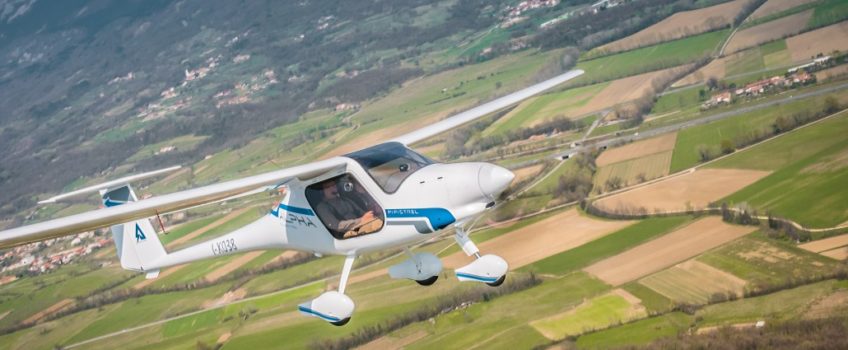
The first ever electric plane was recently certified and flown in Australia marking an exciting frontier for electric aircraft. Australian sustainable aviation company, Electro.Aero, is at the forefront of electric aviation technology. They are responsible for the test flight after obtaining certification for the Alpha Electro from the Australian Civil Aviation Safety Authority late 2017.
Electric Plane Origins
Pipistrel, a Slovenia-based manufacturer, developed the 2-seater, single propeller light aircraft powered by two lithium-ion batteries. The electric version was first introduced in 2015 with a price tag of €69 000 for short-distance training. It was based on the Alpha Electro prototype named, WATTsUP, and classified as the greenest way of learning to fly.
Ivo Boscarol, CEO of Pipistrel, said that the ever-growing cost of fuel meant it was time to rethink pilot training. Their solution was the first practical all-electric trainer. “Technologies developed specially for this aircraft cut the cost of ab-initio pilot training by as much as 70%, making flying more affordable than ever before. Being able to conduct training on smaller airfields closer to towns with zero C02 emissions and minimum noise is also a game changer!”
The Alpha Electro meets microlight and ASTM LSA criteria, as well as standards for electric propulsion. It’s their 5th electric aircraft project and the second one resulting in a commercial product.
Alpha Electro Specifications and Performance
The Alpha Electro is optimised for traffic-pattern operations, where 13% of energy is recuperated on every approach. At the same time, the increased endurance makes short-field landings possible.
Every element of the aircraft was refined to be lighter, more efficient and more reliable. The next generation of Pipistrel’s Battery Management technology enables the dual-redundant 17 kWh battery pack to be either replaceable within minutes or charged in approximately one hour. Reports suggest that a single charge can keep the plane airborne for up to an hour, with 30 minutes in reserve.
Below is a list of a few impressive features, specs and performance:
- 60 kW electric motor
- Cruise speed of 85 knots
- 20 kWh battery capacity
- 60 min flight time with +30 min reserve
- Full recharge takes just 70 minutes
- 265 m Takeoff distance
- 460 m Landing distance
- 550 kg Maximum takeoff weight
- RAAus LSA Certification
The Secret Behind The Electric Plane
According to the company, the Alpha Electro airframe uses proven features from hundreds of Pipistrel’s aircraft currently flying worldwide. The electric powertrain is operated with one simple lever so the focus can be on learning piloting skills. Adding to simplicity, the Alpha Electro’s smart charger is as simple as charging your mobile phone.
One of the most noticeable elements was how silent the electric plane was. Even the cockpit is super quiet and the immediate response from the powertrain and lack of exhaust emissions, make the Alpha Electro a highly sought after piece of engineering.
Richard Charlton, Finance Director at Electro.Aero believes this is the start of the next revolution in general aviation. They’ve already received numerous inquiries from airports located in major cities with noise complaints becoming their number one concern. He also points out how simple the electric plane engine is and that running and maintenance costs are much less compared to fossil fuel-powered engines.
If this doesn’t make you want to take flying lessons, nothing will. Can you guess what the electricity bill would be for your one hour flight?
Get in touch if you need assistance with your engineering project as we manufacture for a number of industries including automotive, rail, construction, aerospace and defence. Our specialties include busbars, fabrication, cnc machining, electroplating, design and development.
This site uses Akismet to reduce spam. Learn how your comment data is processed.


 Mail:
Mail: 




Leave a Comments